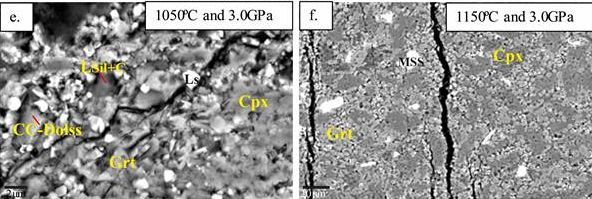Earth Sciences
Experimental Petrology Laboratory
This laboratory, unique in Africa is equipped to carry out experiments on rock systems at the high temperatures and pressures of partial melting and magmatic processes within Earth's crust and upper mantle. Three diffferent types of autoclaves are available: 1. non-end-loaded, solid-media, piston-cylinder machines that can be used for experiments at 0.2 to 4.0 GPa and temperatures ranging from 600 to 1400 °C; 2. An internally-heated gas pressure vessel with the possibility of redox control using a hydrogen diffusion membrane in fluid saturated experiments. This equipment can operate from 0.1 to 0.5 GPa and 600 to 1200 °C; Water pressurized, externally heated cold-seal vessels that can function up to 800 C at 0.1 GPa and 700 C at 0.2 GPa .
Contact Person: Prof Gary Stevens
The following post-graduate student projects either currently use the laboratory of have used it in the last few years:
- Mbali Mthethwa: An experimental investigation of the “fate" of entrained peritectic minerals during adiabatic ascent of S-type granite magmas. MSc, graduated.
- Sara Zarrebini: An experimental investigation into the 'fate' of entrained peritectic minerals in I-type granite magmas intruded at below 2kbar. MSc, graduated.
- Sara Burness: Pyroxene stability within kimberlite magma in the upper mantle: An experimental investigation. MSc, graduated.
- Tahnee Otto: An experimental investigation of the petrogenesis of chromite within the Rustenberg Layered Suite of the Bushveld Complex. PhD, in progress.
- Sara Burness: Sulphur metasomatism of the mantle. PhD, in progress. (*see images from this project)
- Tanisha Shultz: Gold solubility in tolalitic melts. MSc, in progress.

*caption at bottom of page

*caption at bottom of page

Caption for images a-f: BSE images of run producs from
experiments investigating the partial melting of sulphide-bearing metasomatised
mantle. Cpx = clinopyroxene; Grt = garnet; CC-Dolss = calcite-dolomite solid
solution; MSS = mono-sulphide solid solution; Melts, LSil = quenched
silicate melt, LSil-C = quenched silicate-carbonate melt, LS
= quenched sulphide melt. The experimental conditions are indicated in the text
box at top right of each image. The experiments were conducted in graphite-lined
palladium-silver capsules using a non-end-loaded piston-cylinder apparatus.
These images were generated as part of the PhD study of Sara Burness and
were copied from Burness et al., 2017, Poster No. 11IKC-4591, 11th
International Kimberlite Conference, Gaborone, Botswana.

